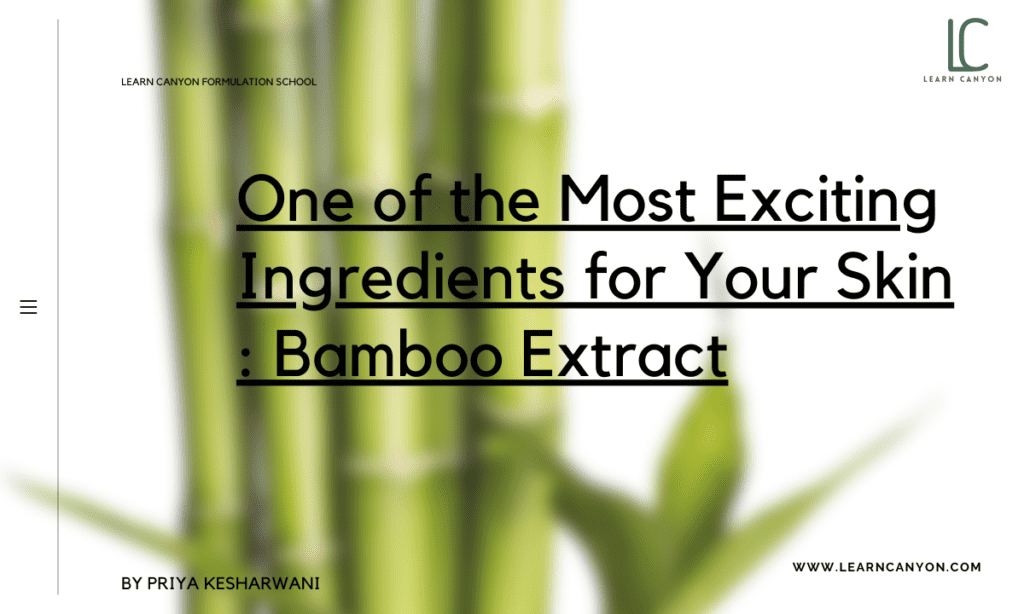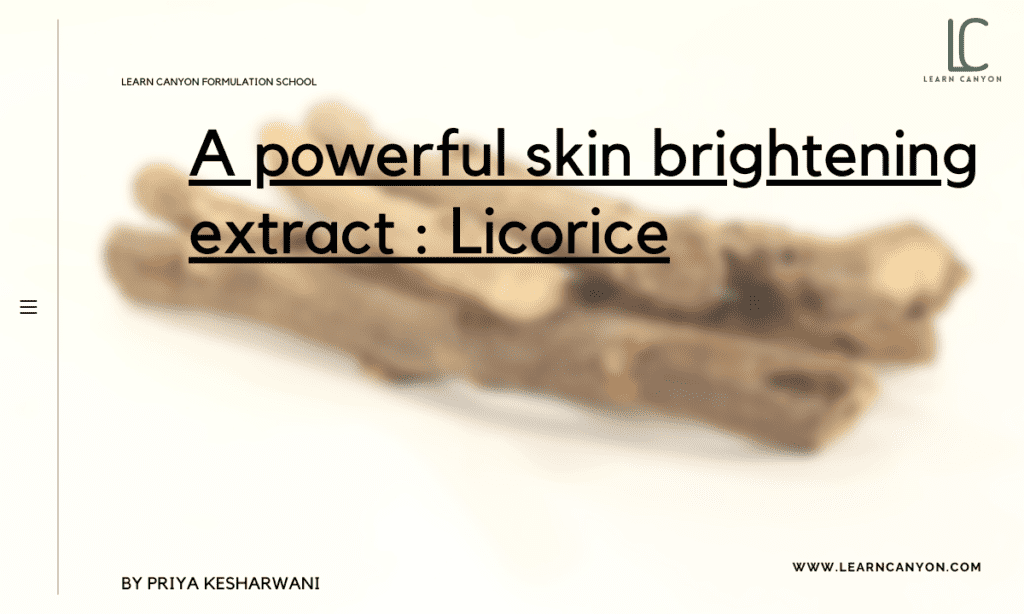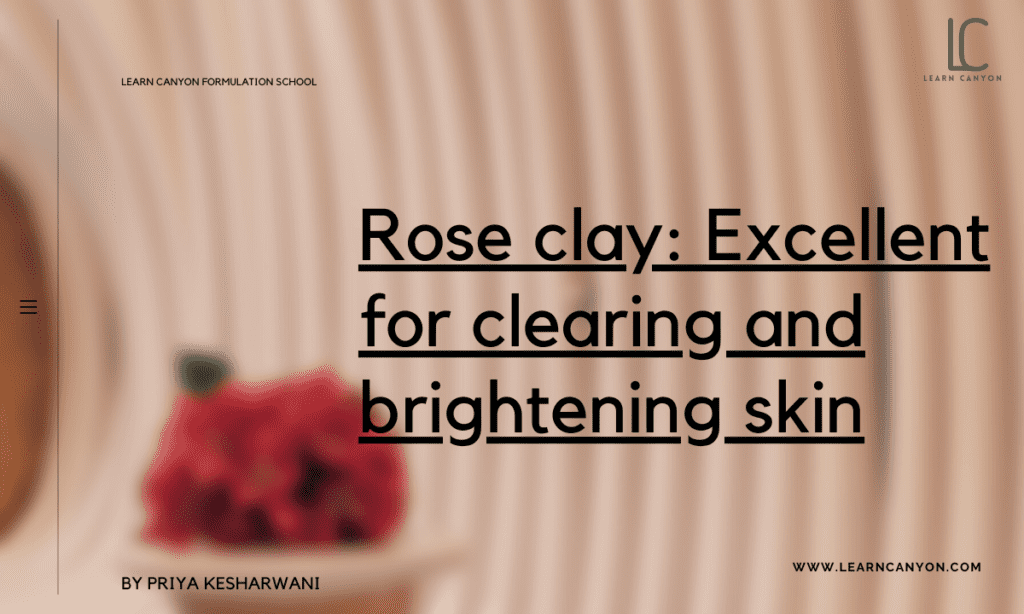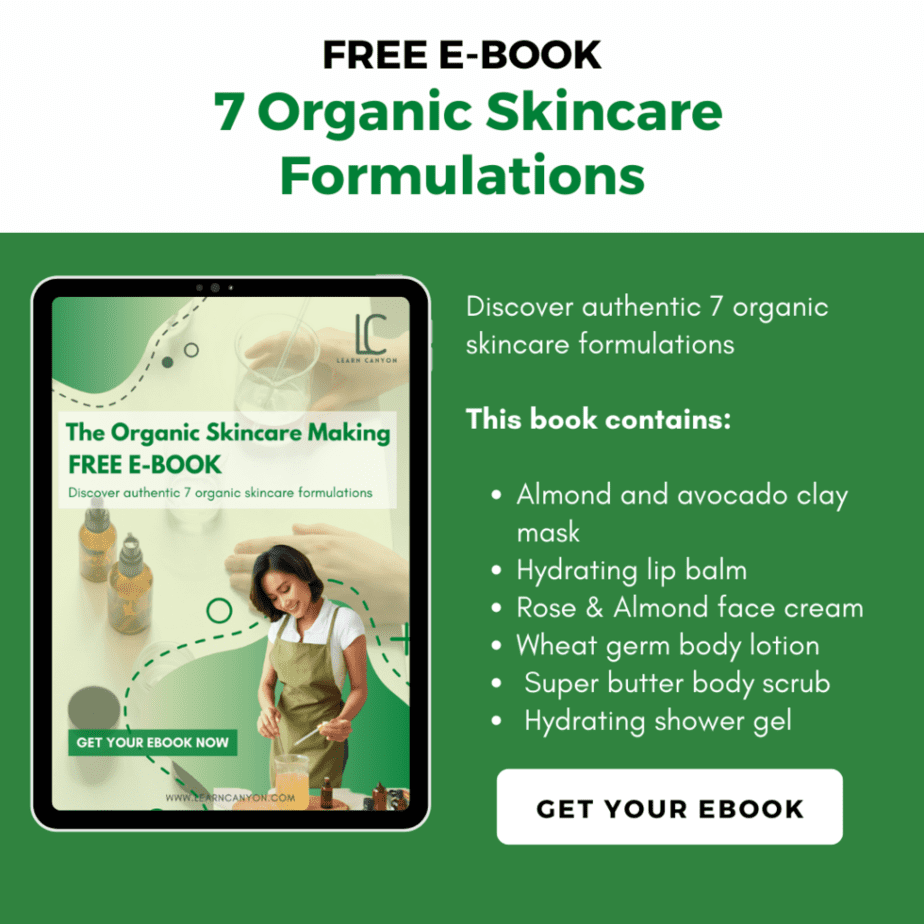
Licorice Extract – Powerful skin brightening

Licorice extract
Licorice is a pungent candy that most people remember loving (or hating) as a youngster. It’s also a sweetener and a medicinal treatment utilised all over the world. It’s a fuzzy, leafy plant with a big root system in its natural state; dried and clipped, it’s just a stick.
Liquorice root has been used to treat a number of maladies for thousands of years, but most people associate it with the iconic black and chewy candy. But we love licorice around here because of its skin-brightening and soothing properties.
While you may like the solid herbal flavour of this confectionery delicacy, you may have noticed licorice root extract on a number of our ingredient lists.
What is Licorice Extract?
The licorice plant’s root contains phytochemical ingredients that protect and brighten your skin.
It’s a plant that’s native to Southern Europe and Western Asia, and it’s been used to treat a range of maladies for centuries. Licorice root extract is produced by the Glycyrrhiza genus of plants.
Two of the most extensively used species in the Glycyrrhiza genus are Glycyrrhiza glabra and Glycyrrhiza uralensis.
| What is it? | Glycyrrhiza Glabra (licorice), a glycerin obtained from natural extract. |
|---|---|
| INCI | Glycyrrhiza Glabra (licorice) extract |
| Appearance | Clear to Slightly hazy Liquid |
| Texture | Light and medium consistency |
| Recommended Usage | 1-10% |
| Solubility | Soluble |
| Melting point | 238–240 °C |
| Boiling point | NA |
| pH | 4-7 |
| Aroma | Characteristic odor |
| Why do we include it in formulations? | Conditioning, moisturising, and anti-aging qualities are all present. |
| How to work with it? | Extracts are placed in the cooling phase of the formulation, and the solubility of miscibles with the formula is checked. |
| Applications | Skin lightening agent that is widely used. The skin is soothed. Irritated skin will benefit from this product. Glycyrrhetic acid and flavonoids are antioxidant and regenerative compounds included in this product. |
| Absorption rate | Fast |
| Strength | Glabridin is an active and powerful component of liquorice root. Glabridin is a skin lightening agent. |
| Weaknesses | Allergic responses are possible with any botanicals. |
| Substitution | Anise |
| How to store it? | Keep at room temperature in a well sealed container. |
| Shelf life | When properly kept and packed, licorice extract has a 12-month shelf life. |
| Type of ingredient | Skin brightener |
|---|---|
| Main benefits | Inhibits the formation of an enzyme that is necessary for the production of melanin (pigment) in the skin, aids in the removal of excess melanin, and has anti-inflammatory properties. |
| Who should use it | Anyone who wants to reduce the appearance of spots and even out skin tone, as well as soothe sensitive skin. It's also a wonderful alternative for pregnant women looking for a safe solution to treat melasma, unlike many other related components. |
| How often can you use it? | This is very dependent on the formulation of the medicine, but in most circumstances, once or twice a day is the absolute limit. |
| Works well with | It's frequently used with other antioxidants and skin brighteners, such as niacinamide and vitamin C, because of its major benefits. |
| Doesn't work with | Linkner warns against using it in conjunction with retinol and/or hydroquinone because it has the potential to irritate the skin. |
| How to use | Extracts are placed in the cooling phase of the formulation. |
Mechanisms of action
Glabridin is one of licorice root extract’s most powerful and active components. It has skin-lightening properties and inhibits the production of the enzyme tyrosinase, which causes darkening of the skin after sun exposure.
It has also been shown to inhibit sun-induced pigmentation.
It could be utilised in sunscreens to combine the two benefits into a single product. Liquiritin, a chemical found in licorice root extract, is used to lighten the skin.
It works by dissolving and breaking down existing extra melanin, reducing skin pigmentation.
Benefits of Licorice Extract
To get the entire range of advantages, you don’t have to eat or drink licorice root. Skin lightening and general better skin quality can be achieved by using skincare products that contain licorice root as an active component.
- Sun protection
Licorice includes glabridin, which helps to stop discoloration in its tracks during and shortly after sun exposure, in addition to brightening skin that has already been damaged by the sun. UV rays cause skin discoloration, however glabridin contains UV blocking enzymes that prevent new skin damage.
- Removes scars
Scars from acne or injuries that occur through no fault of our own are common. By reducing the formation of melanin, an amino acid that causes skin pigmentation, licorice helps hasten the healing process. Although melanin protects the skin from UV ray damage, too much melanin is a different storey. Excess melanin production in response to sun exposure can have negative consequences such as black scarring and even skin cancer.
- It Reduces Inflammation
Licorice is claimed to have a calming effect on the skin and can aid in the reduction of inflammation. Glycyrrhizin, found in licorice, is used to treat skin diseases such atopic dermatitis and eczema by reducing redness, inflammation, and swelling.
- It moisturises the skin.
Licorice aids in the regeneration of collagen and elastin in our skin, which are both essential for keeping our skin elastic, smooth, and baby-soft. Furthermore, licorice aids in the preservation of hyaluronic acid, a sugar molecule capable of retaining up to 1000 times its weight in water, which maintains skin firm and bouncy.
5.Anti-Aging Glycyrrhizin
Glycyrrhizin, a very powerful antioxidant, is found in licorice root extract. Antioxidants protect skin from UV radiation and free radicals when applied topically. As a result, early ageing is avoided.
Side effects of Licorice Extract
While this is a rare allergen, meaning it is unlikely to produce an allergic reaction in and of itself, it can occasionally create a reaction when combined with other components, according to Chwalek. Some people, according to Linkner, find it annoying. If you’re worried about new products straining your skin, test them on a small patch before applying them all over your face.
How to use it in formulation?
You’re mistaken if you believe Licorice can only be utilised as a confectionery flavour. Licorice extract is a popular skincare product. Licorice can help with post-acne hyperpigmentation and uneven skin tone. Extracts are placed in the cooling phase of the formulation
Work well with other ingredients
It’s frequently used with other antioxidants and skin brighteners, such as niacinamide and vitamin C, because of its major benefits.


